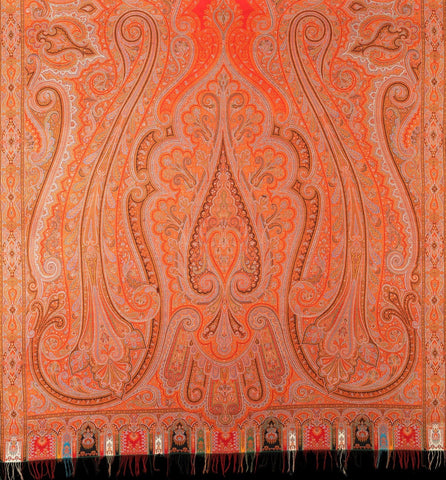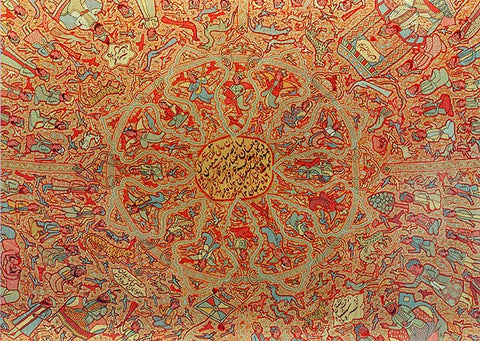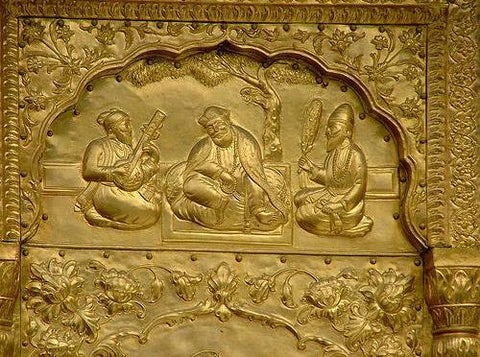Shawls - The Nexus of Punjab and Kashmir
There is a poetic tell tale about the nexus of shawl craftsmanship in in Punjab and Kashmir. The Shawl Industry in Amritsar dates back more than 200 years, to the reign of Maharaja Ranjit Singh.
It wove itself, quite literally, into the fabric of that time - shawls, to be exact. Historians of the Kashmiri Shawl have found depictions of Maharaja Ranjit Singh's funeral bier on antique shawls dating to the mid-19th century.
The art of the Kashmir shawl, which reached new heights under the patronage of Ranjit Singh, of punjab always involved more than just fancy cloth.
When the Sikhs rose to power in Kashmir, Maharaja Ranjit Singh's love of art and of having his courtiers dressed up to the nines made the shawls a staple of the court. One Russian visitor described the scene this way: "the tents were doubled with Kashmir shawls ... we only walked on Kashmir shawls and while sitting down, I perceived that all the alleys, ceilings and streets - as far as the eye could encompass - were covered thusly of superb shawls; even the horses were prancing on them".
Shawls were commissioned by the thousands, and the patterns changed to resemble the times.
Maharaja Ranjit Singh's penchant for art and architecture took hold in the textiles. The outlined domes of gurdwaras slowly became an established design element in these shawls. Some even resembled the Akal Takht building in Amritsar. Instead of spaced-out garden designs along the border, the shawls from the Sikh period had multi-colored, layered patterns, filling the shawl to the center.
And the Sikhs' martial culture, the force behind Ranjit Singh's empire, was also reflected in everyday wear. Kirpans and shields are clearly visible in some antique shawls. So are the crescents and stars inspired by Akali turban ornaments (known as quoits).
Celebrations of Ranjit Singh's conquests nearly always involved dazzling firework displays, which were mirrored in what Ames calls "pyrotechnic shawls". In these, a flamboyant parade of colors, like fireworks, was woven into warm wool and pashmina.
It took two days for Maharaja Ranjit Singh's funeral pyre to burn itself out. Courtiers collected his ashes, placed them in an urn, and hoisted the urn into a palki for the 300-mile journey across the Maharaja's empire. All along the way, rulers and subjects came to pay their homage, laying expensive Shawls over the Maharaja's remains.
During maharaja’s rule the whole of Kashmir and undivided Punjab was under one single reign. This gave an opportunity for the traditional craftsmen of Kashmir to become patron artists of the royal courts in Maharaja Ranjit Singhs. During his reign traditional arts like hand embroideries, marble inlay works and architecture flourished.
This was the conception of the shawl industry in Amritsar, which now serves as the industrial town bustling with culture, tourism and commerce.










beautiful jamavars
beautiful jamavars
Leave a comment